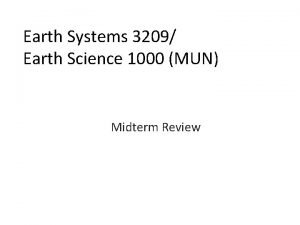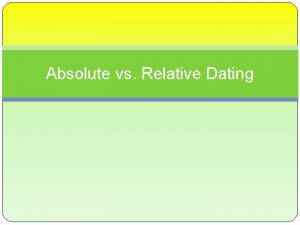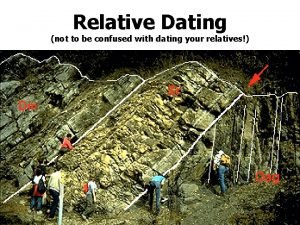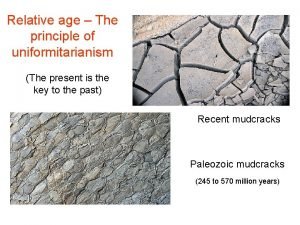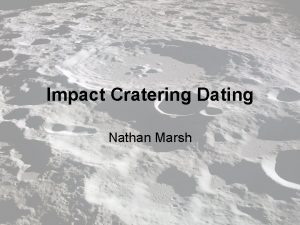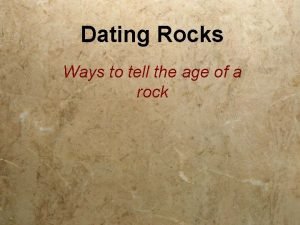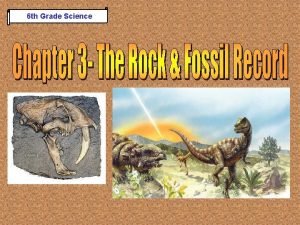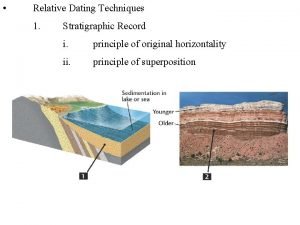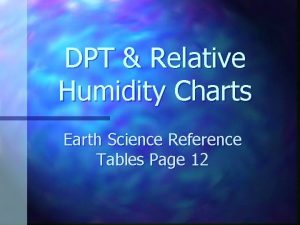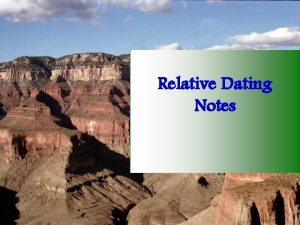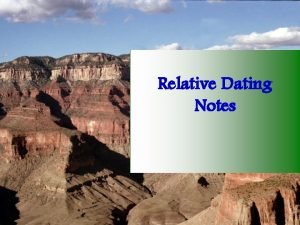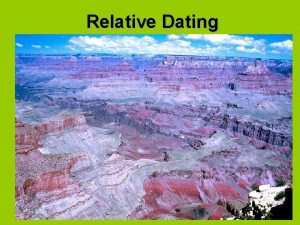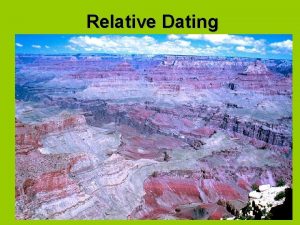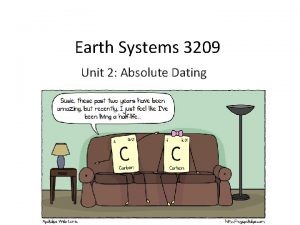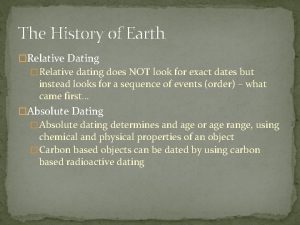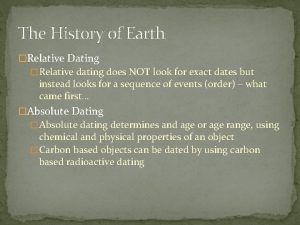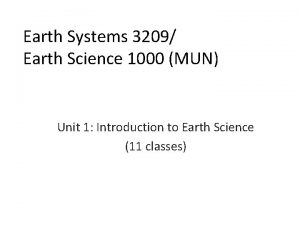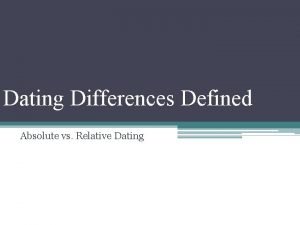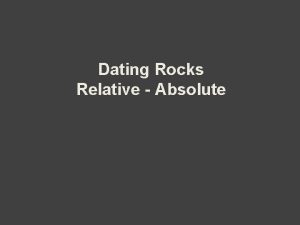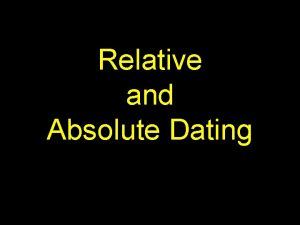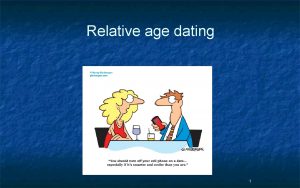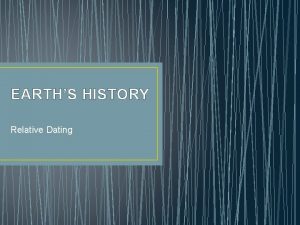Earth Systems 3209 Unit 2 Relative Dating relative
















- Slides: 16

Earth Systems 3209 Unit 2: Relative Dating


relative dating 6 Major Types: 1. 2. 3. 4. 5. 6. Superposition Horizontality Cross-cutting relations Inclusions Unconformities Fossils

Cross sectional layering • Used to show a 2 D image of the layers of rock in the crust • Used in determining relative dating

1. Law of Superposition • Book and cylinder demos • In an undeformed sequence of sedimentary rock, each bed is older than the one above and younger than the one below. *The youngest is always on top

2. Principal of original Horizontality • states that most layers of sediment are deposited in a horizontal position. • If rock layers are folded or inclined, then the layers must have been moved into that position by crustal disturbances. (folding/faulting)

Faulting and Folding • When pressure (compressional or tensional forces) has been added to rocks. • depending on the type and environment, they may break or bend.

Faulting and Folding • Faulting – Movement of rock units along a crack in the rock. • The fault below is caused by compressional forces.

Faulting and Folding • Folding – Bending of rock units caused by compressional forces, as seen below.


3. Cross-cutting relations • Book demo ● An igneous rock is younger than the rock strata (or beds or layers) that it cuts across. ● A geological feature such as a fault is younger than the rock strata (or beds or layers) that it cuts across.

Label the two types of Cross Cutting in the following diagram.

Order the layers from oldest to youngest

Contact Metamorphism • When molten rock comes into contact with older rock • the heat causes a kind of baking that changes the original rock. • Often represented as x’s on diagrams

Contact Metamorphism

Group work • Practice questions
 How to remember king henry viii wives
How to remember king henry viii wives Contemporary dating patterns are formal patterns
Contemporary dating patterns are formal patterns Scarcity entrepreneurship definition
Scarcity entrepreneurship definition Entrepreneurship 3209
Entrepreneurship 3209 Relative dating
Relative dating Relative dating
Relative dating Relative age
Relative age Pearson
Pearson Relative age dating
Relative age dating Relative dating
Relative dating Relative age
Relative age Relative dating
Relative dating Relative dating
Relative dating Features of phacops and tropites as index fossils
Features of phacops and tropites as index fossils Relative dating
Relative dating Unit 10, unit 10 review tests, unit 10 general test
Unit 10, unit 10 review tests, unit 10 general test Earth science reference table relative humidity
Earth science reference table relative humidity
